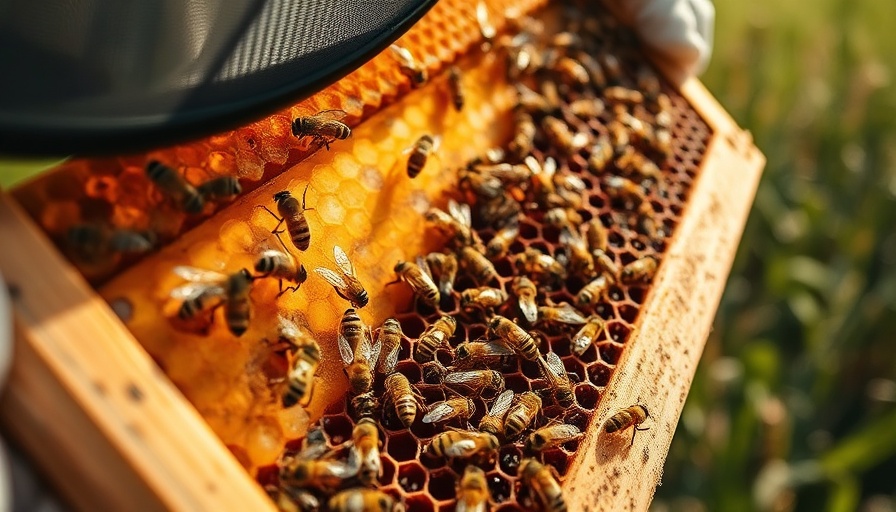
Beehive Sensors: A Modern Solution to Save Honeybee Colonies
In the face of a troubling decline in honeybee populations, innovative technology shows promise in safeguarding these vital pollinators and the ecosystems they support. The University of California, Riverside (UCR), has developed a groundbreaking sensor-based system, the Electronic Bee-Veterinarian (EBV), aimed at enhancing commercial beekeeping through early detection and intervention.
Understanding the Crisis: The Role of Honeybees
Bees are integral to biodiversity and agriculture, pollinating over 80 crops and contributing approximately $29 billion to the United States economy each year. However, these essential creatures are suffering unprecedented losses; a recent report indicated that America lost over 55% of its honeybee colonies in the past year alone. This collapse is driven by escalating pesticide use, environmental changes, and habitat loss, posing significant threats to food security.
How the Electronic Bee-Veterinarian Works
The EBV utilizes low-cost heat sensors and sophisticated forecasting models to monitor hive temperatures, providing beekeepers with early warnings of potential threats to colony health. As temperature fluctuations are among the first signs of distress in hives, the EBV translates data into a straightforward 'health factor' metric, ranging from zero (unhealthy) to one (healthy). This feature allows beekeepers to make informed decisions swiftly, potentially preventing catastrophic colony failures.
The Importance of Temperature Regulation for Bees
Honeybees maintain hive temperatures between 91.4 and 96.8 degrees Fahrenheit for proper brood development and overall colony health. Any deviations can indicate imminent issues, such as heat stress or pathogen infestations. By predicting these shifts, beekeepers can take timely action to avoid collapse, which treks the line between just surviving and thriving.
Reducing Labor Costs and Enhancing Efficiency
Currently, beekeepers rely on manual inspections and personal judgment, which can lead to delays in addressing urgent problems. The EBV offers a critical advancement — it can predict hive conditions several days in advance, allowing for proactive management that significantly lowers labor costs. With forecasts available remotely, beekeepers find themselves empowered to act swiftly and effectively.
Cost-Effective Solutions for Beekeepers
Keeping the costs below $50 per hive was a core objective for the research team. Many commercial sensors are too expensive for the average beekeeper, making innovative and affordable alternatives crucial to widespread adoption. The EBV stands out as an accessible option, designed using off-the-shelf components, thus expanding its reach to small-scale and hobbyist beekeepers too.
A Step Towards Automation in Beekeeping
Looking ahead, UCR researchers are already making strides toward creating automated climate control solutions that can respond to the EBV’s predictions, cleverly adjusting hive conditions to maintain optimal temperatures. While the current system only issues warnings, future developments seek to integrate active temperature control into hive management, further safeguarding bee populations.
Community Impacts and Broader Implications
The implications of successfully utilizing these sensors extend beyond just beekeepers. By stabilizing honeybee colonies, there are potential ripple effects into local economies, food systems, and the environment. A more robust bee population means healthier crops and wild flora, thus supporting not only agricultural productivity but also ecological balance.
Concluding Thoughts: The Future of Beekeeping
The introduction of the Electronic Bee-Veterinarian represents a significant leap forward in the fight against bee population decline. For beekeepers, this technology can be a game-changer, offering innovative tools for monitoring and maintaining hive health effectively. With ongoing research and development in this area, the promise of automated and affordable hive management solutions is becoming increasingly tangible. Advocating for these technologies and supporting local beekeepers will not only help to protect bees but will also play a critical role in sustaining our food systems.
Join the movement to protect honeybee populations and support agricultural sustainability by promoting innovative solutions like the EBV among your local communities.
 Add Row
Add Row  Add
Add 




Write A Comment